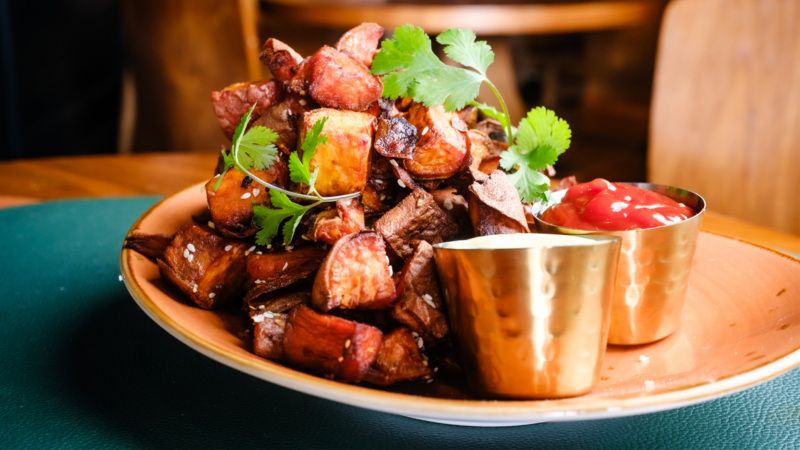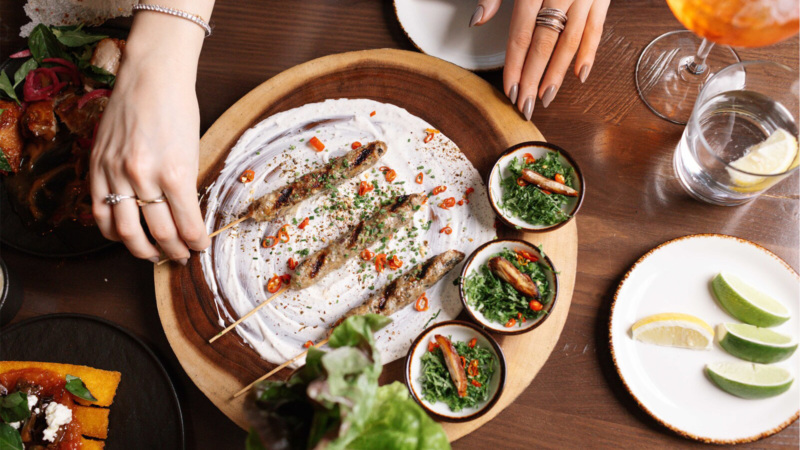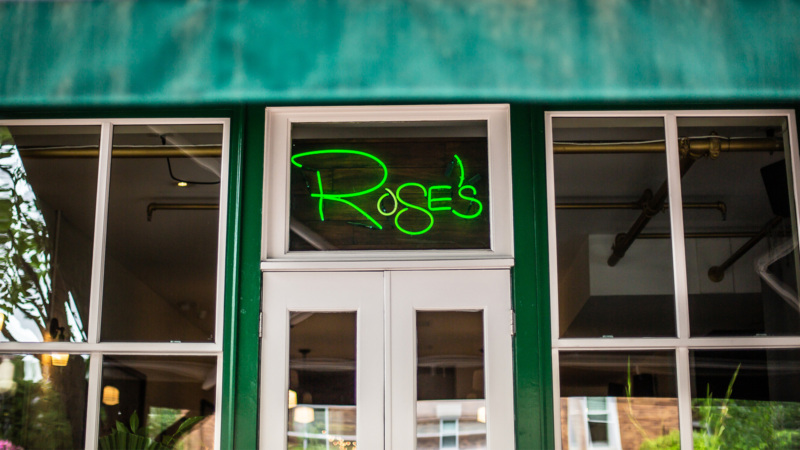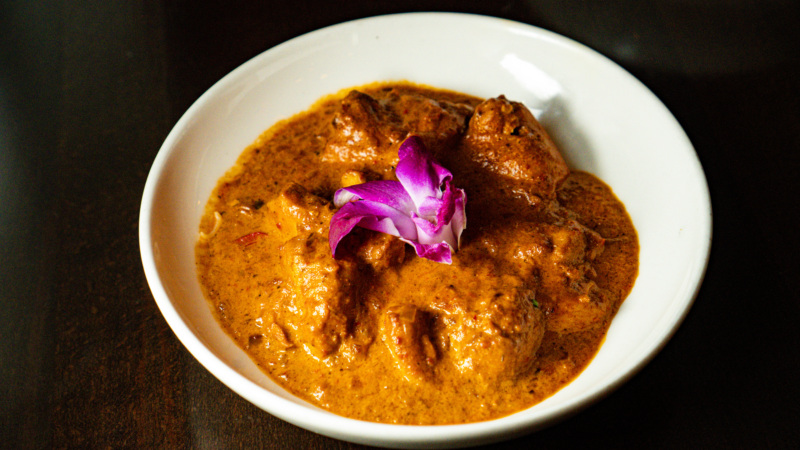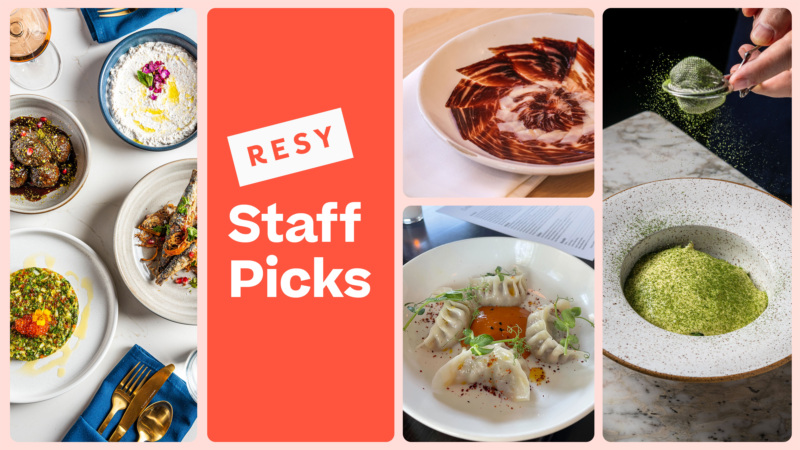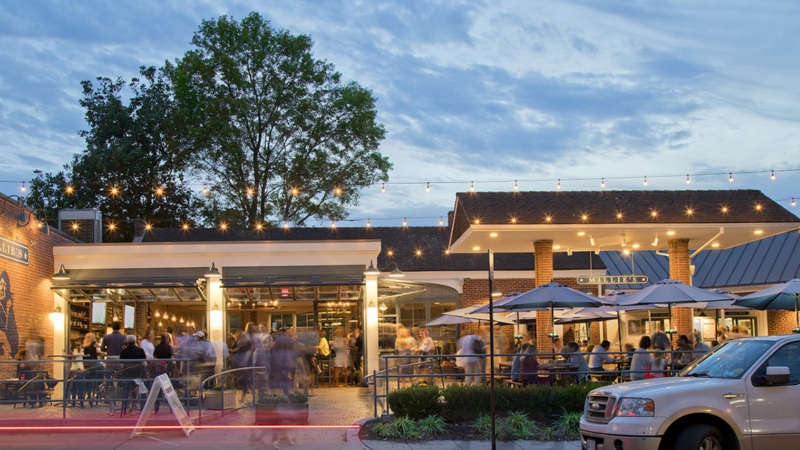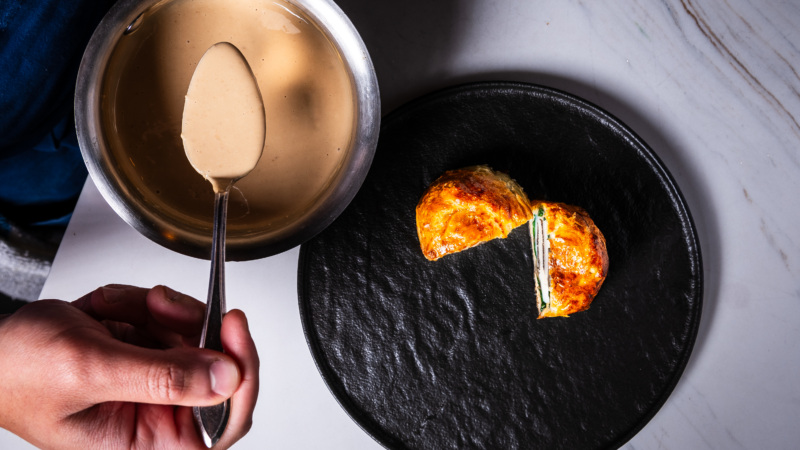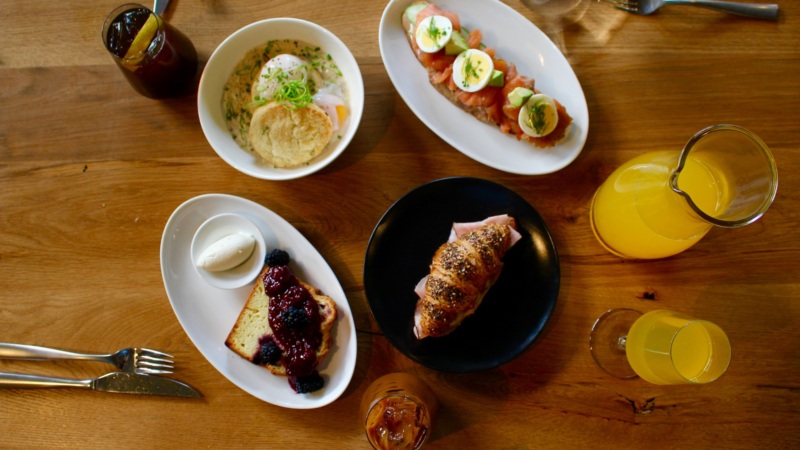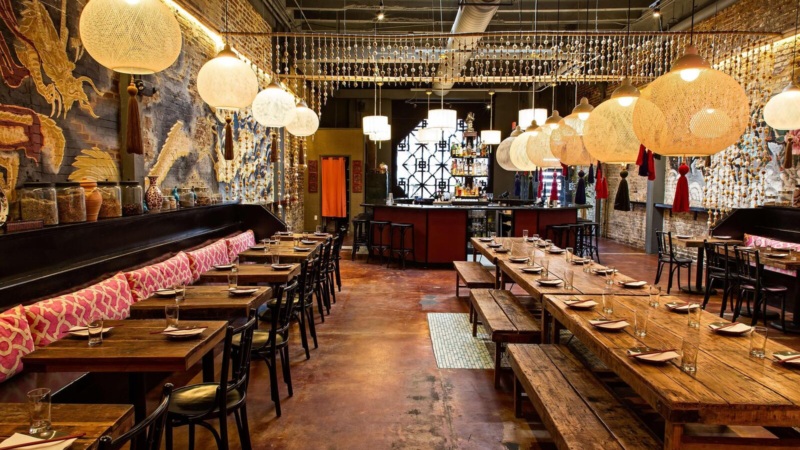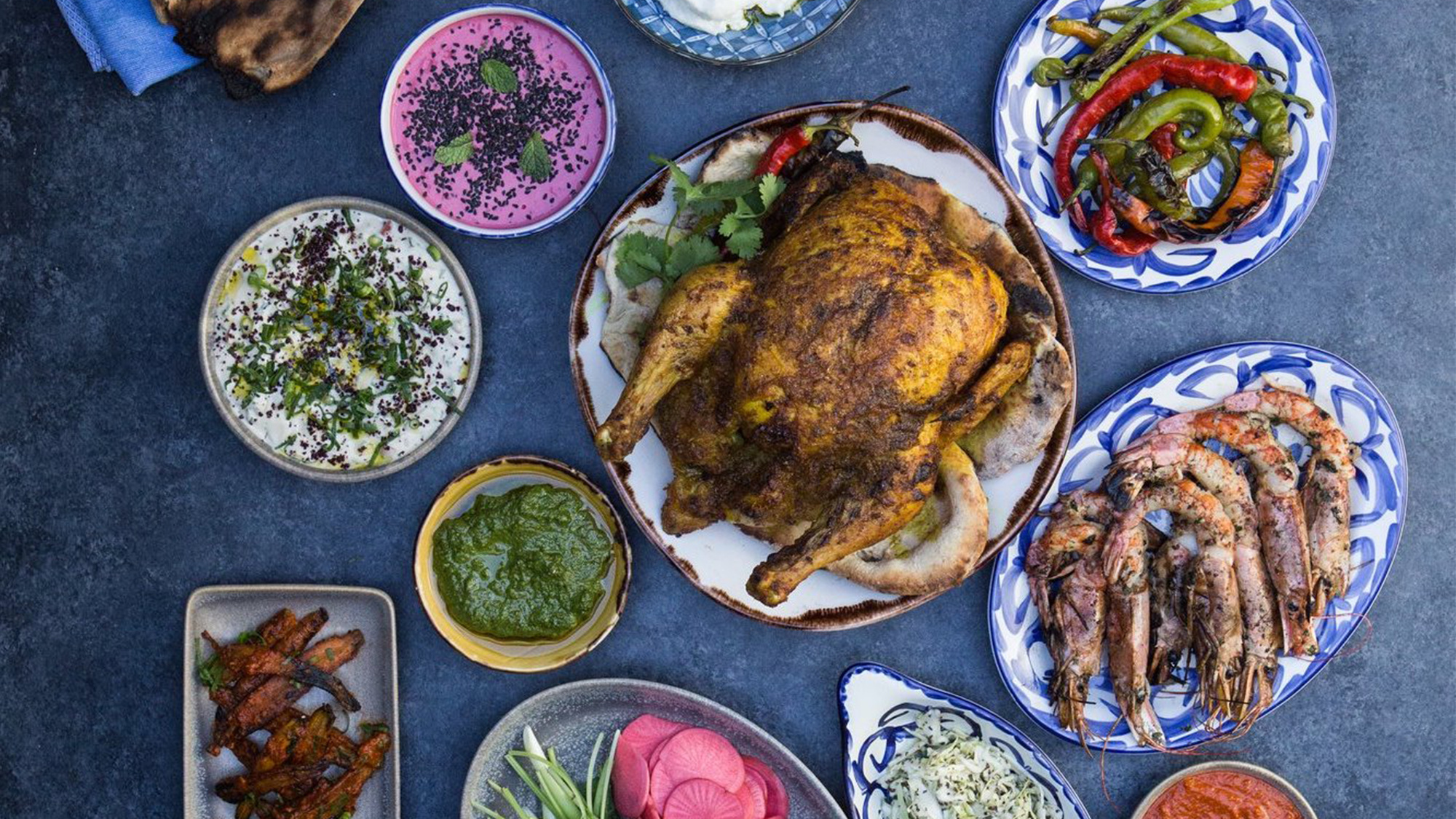
How Maydān Tells Stories In Every Dish (And Its Condiments, Too)
“There’s not a thing on here that doesn’t have a story.”
Rose Previte isn’t lying: Ask her about any of the dishes and the acclaimed restaurateur is bound to “get really dorky,” waxing poetic about the silk trade routes and immigration patterns that have shaped the Levant region, its culinary offerings, and thus, Maydān’s menu.
There is always history in the spices used in this or that dish, and memories lurking behind certain crowd-pleasers. More than anything, this Michelin-starred restaurant is an exploration of the Levant through Previte’s very personal lens.

Previte bills the menu as a collection of travel stories and family recipes: She went on a five-country research trip in the Middle East to eat as much as possible to inform her second restaurant before it opened in late 2017 (Compass Rose is her first). She wanted to do justice to her Lebanese roots and what she calls that most ancient part of the world. As such, cooking over a live fire was non-negotiable.
“Fire was always going to be the way we cooked everything,” she says. “That’s my greatest way to pay tribute to the place I come from. To do it as properly as possible, it needs to be done on fire.”
Here are four dishes from that get to the heart of Previte’s Levantine love letter of a menu, plus the delicious, must-have condiments that are intrinsic to the à la carte experience.
(If you prefer a more curated experience, check out the set family-style Tawle menu, which Previte highly recommends.)


1. Omani Shrimp
(Dried lime, tamarind, chiles)
“We used to say the food from the restaurant comes from Tangier to Tehran and from Batumi to Beirut. But then we discovered Omani food, which is sort of out of that range. So now we have to say, ‘Plus Oman!’
“The author of the only English language cookbook [The Food of Oman, by Felicia Campbell] we found set up a culinary trip for us in Oman. We spent a week there and it was amazing. We cooked in the desert with Bedouin communities; we went to Salalah, on the west coast of Oman bordering with Yemen where they have a tropical environment, which you wouldn’t get in the Levant region (we were able to bring more fruits onto our menu!). Fun fact: The capital of Oman used to be Zanzibar, the spice capital of the world. So, you get a lot of cool spices like tamarind, that, in my Lebanese background, you wouldn’t usually see. It’s a very unique and diverse culinary place.
“We tried to stop at street vendors as much as possible, as opposed to restaurants. We would say, ‘Let’s go to the mishkak stand’ — ‘mishkak,’ I think, generally means meat, but is [used as] the name of the street food vendors in Muscat, the capital. They set up at night, by the beach, one was by the airport, you’d get meat or shrimp on a stick. And this one, from a vendor on the side of the road, struck us as so delicious that we tried to convince the vendor to give us the ingredients. He was so confused, he was like, ‘I don’t understand why you care about this.’ But we cobbled together his recipe and that’s what on this menu now. And it really is delicious, it’s one of our most popular items, 100% inspired by the street stalls of Muscat.”
2. Lamb Shish Kebab
(Kefir yogurt, cumin, peppers, onions)
“The lamb shish kebab, to me, is summer in a Lebanese family. You’re getting together, having picnics — I grew up in the US but still, that tradition of lamb grilled over fire is childhood and summer and all things good in the world. It’s a family recipe and a very simple setup with just pepper and onions. We marinade the lamb in yoghurt beforehand — it just makes it super tender. I wanted to pay tribute to my family and I don’t think there’s any other dish on here that represents my childhood more than that.”


3. Ribeye
(Adjika, blue fenugreek)
“Our opening chef and I went to five countries to create our original menu: Morocco, Tunisia, Lebanon, Georgia, and Turkey. This is very much inspired by a trip to the republic of Georgia. My wine importer, who is now a very dear friend, took us to his family’s home as part of our trip there. We were making bread and cooking with grandmas, and his in-laws were about to have their 30th wedding anniversary. Being very American, we were like, ‘We don’t want to interrupt this celebration!’ And being Georgian and the most hospitable people on earth, they were like, ‘No, we insist you come to our party. It would be rude for you not to come,’ right? And I was like, ‘The only way we’re going to do it, is if you let us cook.’
“They brought a goat and did this cool outdoor fire. But then they also handed us ribeye steaks. And these are nothing like we’re used to, right, they’re like mountain cows. It’s not even common in Georgia, it was just for this big celebration. We went to the kitchen and found adjika, which is basically Georgian paprika — ground local red peppers that have a little kick, but not very much. And the blue fenugreek, not to be confused with general fenugreek, only grows in Georgia, it’s a very special varietal. So, we did a dry rub with spices, cooked it over the fire, and it came out beautifully.
“We can only make this dish with imported blue fenugreek from Georgia and it is very much tied to the hospitality of this very special occasion. I almost didn’t want a steak on the menu, because that’s not traditional to any of the countries we are inspired by. But once we talked through it, I was like, ‘Actually, that makes a lot of sense.’ It’s very special and delicious.”
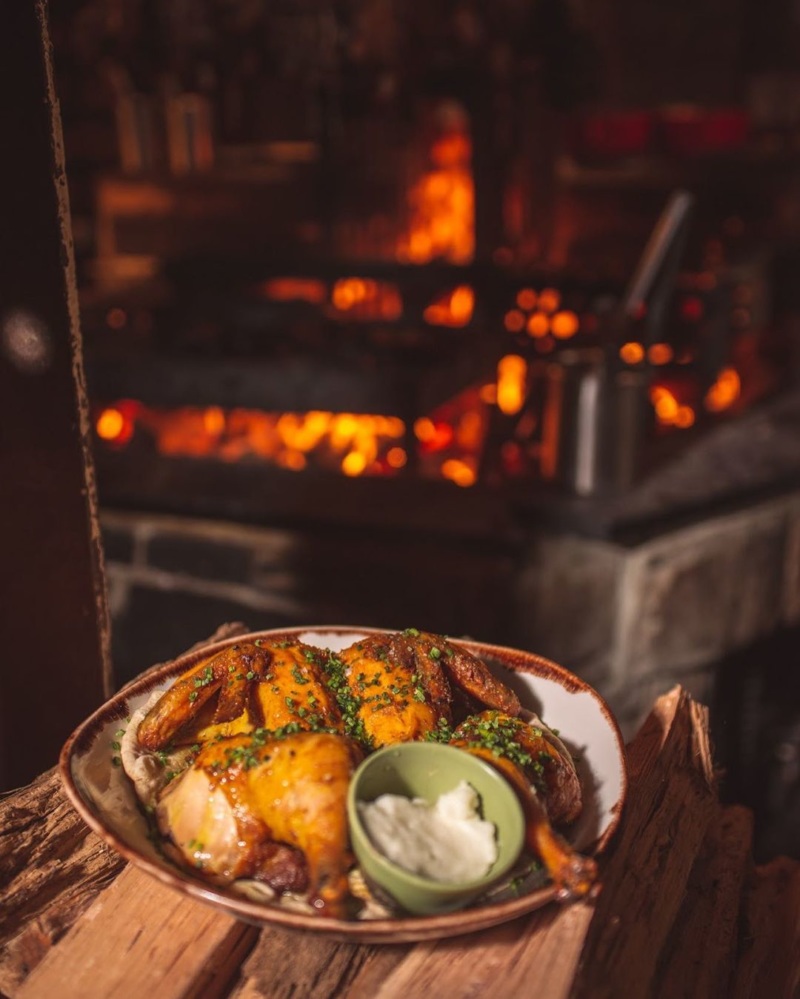

4. Whole Roasted Chicken
(Turmeric, coriander, toum)
“The whole roasted chicken is a fun one from that same five-country trip. A lot of the flights in the Middle East land at very bizarre times, and I think we had a 2 a.m. arrival in Lebanon. We were starving and there’s a very famous restaurant in Beirut that is open all night, at least before COVID. It’s called Barbar and it’s a whole city block with a falafel stand, a kebab/shashlik stand, and all these different things. But they have this delicious fire-roasted chicken that they serve over pita bread. It’s turmeric-rubbed and served with toum, which is a very traditional Lebanese garlic sauce. But the beauty of it, is that all these flavors together — the bread, the toum, the taste of fire from the chicken — make this beautiful meal, which we had at 2 o’clock in the morning on the street. Our whole roasted chicken is very much our tribute to that moment and that memory. The first taste is so striking, we tried to replicate it in the chicken.”
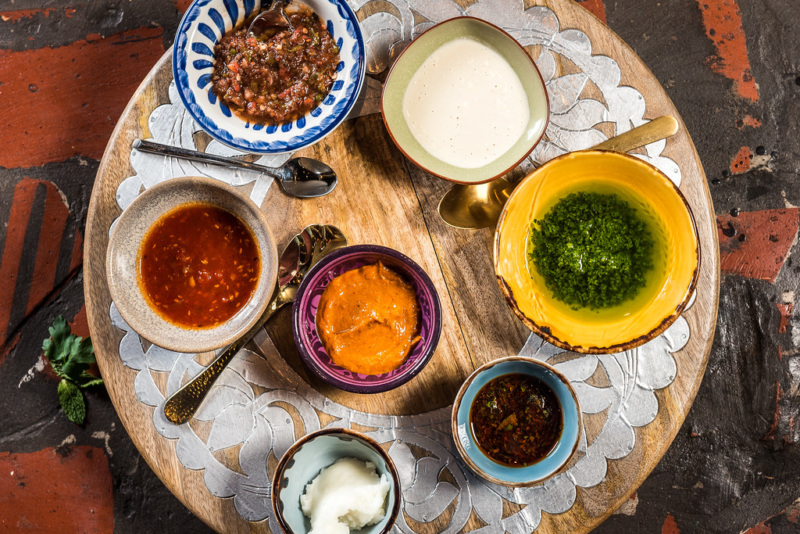

5. The Condiments
“You could say all those countries would clash on the menu, but they actually work very well together. And that’s because of the way people travelled, in a very nomadic way. All the condiments are indicative of the regions we represent. Chermoula is from Tunisia, zhough is from Yemen, tahina is Lebanon to me, so is toum (but ours is a Syrian recipe), harissa is Morocco, and ezme is Turkey. Those are all meant to be added to any of the dishes. Combining flavors and creating a favorite bite is how we encourage people to eat with us.”
Maydān is open Tuesdays through Sundays from 5 to 10:30 p.m.
Noëmie Carrant is a Resy staff writer. Follow Resy on Instagram and Twitter.











